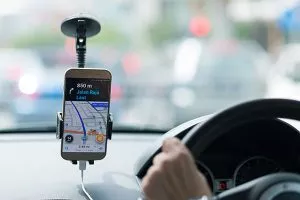Big data is one of the latest victims of buzzword fatigue. Once the talk of the town, the term was dropped from the hype train years ago in favor of various other promising trends. Some pundits have even said big data is dead. In this post, we'll examine three case studies that suggest big data is still alive and well.  The Etsy experience is an online shopper's dream come true. Users have access to a navigational paradise crafted to almost anything the heart can desire. “Goat milk soap.” “Walking Dead props.” “Pet shoes.” This e-commerce haven has little of everything, and data is the catalyst for presenting that smorgasbord of goodies to the Etsy user.
Big data is built on three core principles: velocity, variety, and volume. Let's take a closer look at how each component applies to Etsy's situation:Volume refers to the massive amount of data organizations possess. In the case of Etsy, volume was instrumental in the company's decision to take a more analytical approach to database management. Big data app Vertica allowed Etsy to move data from hundreds of Postgre and MySQL databases into a single database that would accommodate the bulk of its data handling operations. In addition to solving the volume issue, Vertica delivered real-time insights that helped Etsy analysts perform data processing tasks that would ordinarily take days in a matter of seconds.Variety describes the many different types of data that makes its way to storage. For Etsy, it comes in the form of information about sellers, buyers, private messages, and the clickstream data that accompanies incoming traffic. By upgrading to big data architecture, Esty can efficiently support the various traditional databases with which other platforms like Postgre and MySQL struggle.Velocity is a measure of how fast data pours into a given system. As one of the world's most popular online shopping destinations, Etsy's velocity can be described as fast and furious concerning traffic, clicks, and on-site activity. Etsy combines clickstream data with the information it collects from other sources to create a more personalized user experience. A perfect example is pairing recently viewed items with purchase history to entice visitors with relevant listings that might interest them as they navigate the store.
The Etsy experience is an online shopper's dream come true. Users have access to a navigational paradise crafted to almost anything the heart can desire. “Goat milk soap.” “Walking Dead props.” “Pet shoes.” This e-commerce haven has little of everything, and data is the catalyst for presenting that smorgasbord of goodies to the Etsy user.
Big data is built on three core principles: velocity, variety, and volume. Let's take a closer look at how each component applies to Etsy's situation:Volume refers to the massive amount of data organizations possess. In the case of Etsy, volume was instrumental in the company's decision to take a more analytical approach to database management. Big data app Vertica allowed Etsy to move data from hundreds of Postgre and MySQL databases into a single database that would accommodate the bulk of its data handling operations. In addition to solving the volume issue, Vertica delivered real-time insights that helped Etsy analysts perform data processing tasks that would ordinarily take days in a matter of seconds.Variety describes the many different types of data that makes its way to storage. For Etsy, it comes in the form of information about sellers, buyers, private messages, and the clickstream data that accompanies incoming traffic. By upgrading to big data architecture, Esty can efficiently support the various traditional databases with which other platforms like Postgre and MySQL struggle.Velocity is a measure of how fast data pours into a given system. As one of the world's most popular online shopping destinations, Etsy's velocity can be described as fast and furious concerning traffic, clicks, and on-site activity. Etsy combines clickstream data with the information it collects from other sources to create a more personalized user experience. A perfect example is pairing recently viewed items with purchase history to entice visitors with relevant listings that might interest them as they navigate the store.  Uber has virtually become synonymous with the very industry it helped revolutionize. The peer-to-peer transportation service currently employs well over 100,000 people, who drive millions of customers across more than 60 countries. While the company's meteoric rise can be attributed to a multitude of factors, data plays a significant role in its continued success. In fact, a closer look at its data processing architecture reveals that Uber is every bit the big data company that Amazon or Google is.
With Hadoop at the helm, Uber can collect and analyze data on billions of drivers, customers, and interactions. The firm “streamlines” data processing via streaming, which allows Hadoop to ingest data from multiple sources simultaneously. When a rider requests a vehicle, Uber calls on that information to quickly match them up with the best driver in their area. Every trip generates new data the company uses to determine prices, predict vehicle demand, and better manage resources. From research and development to location tracking and safety, data is at the heart of everything Uber does.
Uber has virtually become synonymous with the very industry it helped revolutionize. The peer-to-peer transportation service currently employs well over 100,000 people, who drive millions of customers across more than 60 countries. While the company's meteoric rise can be attributed to a multitude of factors, data plays a significant role in its continued success. In fact, a closer look at its data processing architecture reveals that Uber is every bit the big data company that Amazon or Google is.
With Hadoop at the helm, Uber can collect and analyze data on billions of drivers, customers, and interactions. The firm “streamlines” data processing via streaming, which allows Hadoop to ingest data from multiple sources simultaneously. When a rider requests a vehicle, Uber calls on that information to quickly match them up with the best driver in their area. Every trip generates new data the company uses to determine prices, predict vehicle demand, and better manage resources. From research and development to location tracking and safety, data is at the heart of everything Uber does.  Information has long been a valuable asset to law enforcement. Data analytics gives law enforcement the power to leverage that information to improve the decision making processes that help reduce and prevent crime. The LAPD currently uses Palantir's big data software to build a more accurate profile of potential criminals. Palantir centralizes data from police cameras, traffic stops, government agencies, and other sources to give local officers faster access to relevant data. For instance, if a convicted felon's vehicle is spotted in a high-crime area, the system may send a notification to near-by officers
to be on alert.
Analytics can be the difference maker in sectors where data access is integral to the quality of service. However, law enforcement's slow adoption of data-friendly tools is telling of the big data barriers that still exist.
Information has long been a valuable asset to law enforcement. Data analytics gives law enforcement the power to leverage that information to improve the decision making processes that help reduce and prevent crime. The LAPD currently uses Palantir's big data software to build a more accurate profile of potential criminals. Palantir centralizes data from police cameras, traffic stops, government agencies, and other sources to give local officers faster access to relevant data. For instance, if a convicted felon's vehicle is spotted in a high-crime area, the system may send a notification to near-by officers
to be on alert.
Analytics can be the difference maker in sectors where data access is integral to the quality of service. However, law enforcement's slow adoption of data-friendly tools is telling of the big data barriers that still exist.
1. Etsy's Crafty Big Data Strategy

2. Uber's Driving Force

3. Data-Driven Crime Fighting in the LAPD

Conclusion
Despite losing a bit of its cool factor, the core premise of big data rings louder than ever. Whether you prefer to call it big, little, or fast, data is undoubtedly your most important asset. Not even the strongest opinionated of pundits can deny that. If you can find a way to extract its full value, you can carve out your own success story.You May Also Like
- Uncategorized
5 Steps to Building an Effective Ransomware-Free Data Protection Strategy
July 5th, 2021 - Business Continuity Uncategorized
Arcserve & StorageCraft: The New Business Continuity Leader
February 24th, 2021